 W
WDom Afonso I of Braganza was the first Duke of Braganza and the eighth Count of Barcelos. He would start a dynasty, the House of Braganza, that would end up being the most powerful and wealthy in all of Portugal. His descendants would go on to become high-ranking nobles, imperial officials, and even the Kings of Portugal and the Emperors of Brazil.
 W
WAfonso Sanches, Lord of Albuquerque was a Medieval nobleman, Lord of Cerva and Alburquerque.
 W
WInfante Afonso of Portugal was a Portuguese infante (prince), son of King Afonso III of Portugal and his second wife Beatrice of Castile. He was titled Lord of Portalegre, Castelo de Vide, Arronches, Marvão and Lourinhã.
 W
WÁlvaro Vaz de Almada, 1st Count of Avranches was an illustrious Portuguese knight and nobleman, with a long and illustrious career abroad in England. He was invested by the English king, Henry VI as the 1st Count of Avranches and made a Knight of the Garter.
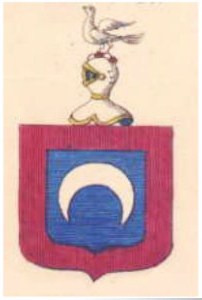 W
WLuís de Alpoim was a medieval Knight, ambassador to England, France and the Holy Roman Empire.
 W
WMendo de Alpoim (c.1360-14?) was a Portuguese nobleman, chancellor and ambassador, member of the court of John I of Portugal. He served in diplomatic missions in the Kingdom of England.
 W
WBeatrice of Castile, an illegitimate daughter of Alfonso X of Castile and his mistress Mayor Guillén de Guzmán, was the second Queen consort of Afonso III of Portugal.
 W
WBeatrice was the only surviving legitimate child of King Ferdinand I of Portugal and his wife, Leonor Teles. She became Queen consort of Castile by marriage to King John I of Castile. Following her father's death without a legitimate male heir, she claimed the Portuguese throne, but lost her claim to her uncle, who became King John I of Portugal, founder of the House of Aviz.
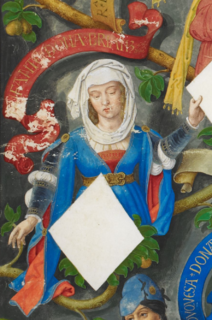 W
WBeatrice of Portugal was Countess of Alburquerque as the wife of Sancho Alfonso of Alburquerque. She was the daughter of Peter I of Portugal and his wife Inês de Castro.
 W
WBeatrice of Portugal, LG, was a natural daughter of John I of Portugal and Inês Pires born before the marriage of her father with Philippa of Lancaster. She was a sister of Afonso, Duke of Braganza and half-sister of King Edward of Portugal, Infante Peter, Duke of Coimbra, Henry the Navigator, Isabella of Portugal, John, Lord of Reguengos de Monsaraz, and Ferdinand the Saint Prince. Queen Philippa was in charge of the education of both of her husband's children out of wedlock.
 W
WBlanche of Portugal, was an infanta, the firstborn child of King Afonso III of Portugal and his second wife Beatrice of Castile. Named after her great-aunt Blanche of Castile, queen of France, Blanche was the Lady of Las Huelgas, Montemor-o-Velho, Alcocer and Briviesca, the city which she founded.
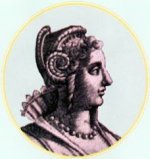 W
WBeatrice of Castile or Beatriz, was an infanta of Castile, daughter of Sancho IV and María de Molina. She was Queen of Portugal from the accession of her husband, Afonso IV, until his death on 28 May 1357.
 W
WInês de Castro was a Galician noblewoman best known as lover and posthumously-recognized wife of King Peter I of Portugal. The dramatic circumstances of her relationship with Peter, which was forbidden by his father King Afonso IV, her murder at the orders of Afonso, Peter's bloody revenge on her killers, and the legend of the coronation of her exhumed corpse by Peter, have made Inês de Castro a frequent subject of art, music, and drama through the ages.
 W
WÁlvaro Gonçalves Pereira, Prior of Crato, was born to Gonçalo (Gonçalves) Pereira, 97th Archbishop of Braga (1326-1349) and Teresa Peres Vilarinho. At a very young age, he entered the Order of St. John of the Hospitallers. At Rhodes, at the time seat of the Order, he fought the Turks in the galleys of the Hospitallers so proving his worth that the Grand Master made him Prior of the Hospitallers in Portugal. There he founded the Castle of Amieira, the palaces of Bonjardim and the Castle of Flor da Rosa, next to Crato, the seat of the Order in Portugal. He administered the Order with great zeal and won a brilliant victory at Salado. He was one of the eminent figures of the reigns of Kings Afonso IV, Peter I and Ferdinand I. He died at an advanced age ca 1375. He was the father of the Constable of Portugal, Nuno Álvares Pereira.
 W
WConstance of Portugal, was Queen of Castile by her marriage to Ferdinand IV.
 W
WDiniz d' Alpoim (c.1300-?) was a Portuguese nobleman, Lord of Esgueira, He served as ambassador to Aragon in times of Afonso IV.
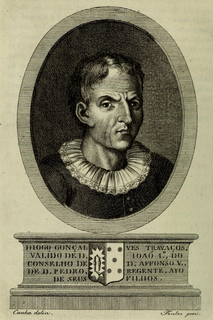 W
WDiogo Gonçalves de Travassos (1390s–1449) was a Portuguese nobleman, who served as escrivão da puridade of Peter, Duke of Coimbra.
 W
WElizabeth of Aragon, more commonly known as Saint Elizabeth of Portugal, T.O.S.F., was queen consort of Portugal, a tertiary of the Franciscan Order and is venerated as a saint of the Catholic Church.
 W
WJohn Falconet, (1350–1400s) was an English nobleman, member of the Court of Philippa of Lancaster.
 W
WLopo Fernandes Pacheco, was the first of his lineage to accede to the highest ranks of the nobility, that of a rico-homem, in the Kingdom of Portugal. He lived during the reign of King Afonso IV of Portugal of whom he was his favorite and loyal vassal. His parents were João Fernandes Pacheco and his wife Estevaínha Lopes de Paiva, daughter of Lope Rodrigues de Paiva and Teresa Martins Xira. His family owned properties in different parts of the kingdom although its area of influence was mainly Beira in the northern part of the country.
 W
WFernão Martins da Fonseca Coutinho was a Portuguese nobleman, Lord of Couto de Leomil.
 W
WFernão Velho was a Portuguese nobleman, who served during the Kingdom of Portugal as Alcaide of Veleda. and squire of Peter, Duke of Coimbra.
 W
WPedro da Fonseca was a Portuguese Cardinal who served as Bishop of Astorga, 1414–1418, and Bishop of Sigüenza, 1419–1422.
 W
WGil Cabral (1300s-1362) was a Portuguese nobleman, who served as priest and bishop of Guarda, Portugal.
 W
WÁlvaro Gil Cabral (c.1335-?) was a Portuguese nobleman, Lord of Belmonte, and Azurara. He served as Alcaide of Guarda, Portugal between 1383–1399.
 W
WGonçalo Vasques Coutinho (1360s–1410s) was a Portuguese nobleman, 2nd Marshal of Portugal, who served as alcaide-mór of Trancoso and Lamego.
 W
WIsabella of Portugal (1364–1395) was the natural daughter of King Ferdinand I of Portugal, from an unknown mother.
 W
WIsabella of Aragon was a daughter of Peter IV of Aragon and his fourth wife, Sibila of Fortia. She was infanta of Aragon and Countess of Urgel.
 W
WIsabella of Portugal was Duchess of Burgundy as the third wife of Duke Philip the Good. Born a Portuguese infanta of the House of Aviz, Isabella was the only surviving daughter of King John I of Portugal and his wife Philippa of Lancaster. Her son by Philip was Charles the Bold, the last Valois Duke of Burgundy. Isabella was the regent of the Burgundian Low Countries during the absence of her spouse in 1432 and in 1441–1443. She served as her husband's representative in negotiations with England regarding trade relations in 1439 and those with the rebellious cities of Holland in 1444.
 W
WJoão das Regras, in English, literally John of the Rules, was a Portuguese jurist of the second half of the 14th century. In the context of the 1383—1385 Crisis, in Portugal, he stood out for his masterly representation for the cause of the Master of Avis in the Coimbra Courts of 1385, the corollary of which was his acclaim as King of Portugal.
 W
WJoão de Alpoim (born-14th-century) was a Portuguese nobleman. He served as ambassador of Portugal in Castile.
 W
WJohn of Portugal, occasionally surnamed Castro, was the eldest surviving son of King Peter I of Portugal by his mistress Inês de Castro. He was a potential but unsuccessful contender for the Portuguese throne during the 1383–85 crisis of succession.
 W
WPhilippa of Lancaster was Queen of Portugal from 1387 until 1415 by marriage to King John I. Born into the royal family of England, her marriage secured the Treaty of Windsor and produced several children who became known as the "Illustrious Generation" in Portugal.
 W
WFernão Lopes was a Portuguese chronicler appointed by King Edward of Portugal. Fernão Lopes wrote the history of Portugal, but only a part of his work remained.
 W
WMaria of Portugal was a Portuguese princess who became Queen of Castile upon her marriage to Alfonso XI in 1328. She was the first daughter of King Afonso IV of Portugal and his first wife Beatrice of Castile.
 W
WMaria of Portugal was a Portuguese infanta (princess), first daughter of King Peter I of Portugal and his Queen consort Constanza Manuel.
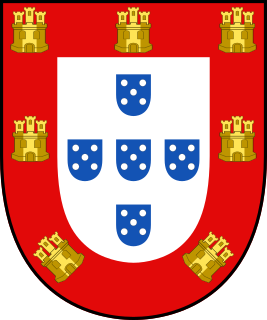 W
WMartim Afonso Chichorro (1250–1313) was a Portuguese nobleman, who served in the Court of Denis of Portugal.
 W
WMartim Afonso de Melo (1360–1432) was a Portuguese nobleman, Lord of Arega and Barbacena. He served as Alcaide of Évora, and Guarda-mor of John I of Portugal.
 W
WPedro de Menezes Portocarrero, was a 15th-century Portuguese nobleman and military figure. Pedro de Menezes was the 2nd Count of Viana do Alentejo, 1st. Count of Vila Real and the first Portuguese governor of Ceuta.
 W
WInfante Dom Henrique of Portugal, Duke of Viseu, better known as Prince Henry the Navigator, was a central figure in the early days of the Portuguese Empire and in the 15th-century European maritime discoveries and maritime expansion. Through his administrative direction, he is regarded as the main initiator of what would be known as the Age of Discovery. Henry was the fourth child of the Portuguese king John I, who founded the House of Aviz.
 W
WPedro Afonso, Count of Barcelos, was an illegitimate son of King Denis of Portugal and Grácia Frois. He was made the 3rd Count of Barcelos on 1 May 1314.
 W
WPedro Gomes de Abreu (14th-century) was a Portuguese nobleman, Lord of Regalados and Valadares, Alcaide of Lapela.
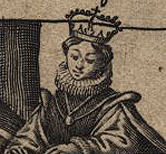 W
WConstanza Manuel of Villena was the daughter of Castilian nobleman and writer Don Juan Manuel (1282–1348), Duke of Peñafiel, and his second wife Constance of Aragon, daughter of James II of Aragon.
 W
WBeatriz Pereira de Alvim (1380–1414) was a Portuguese noblewoman, the only child of Nuno Álvares Pereira and his wife Leonor de Alvim.
 W
WD. Nuno Álvares Pereira, O. Carm., also spelled Nun'Álvares Pereira, 7th Count of Barcelos, 3rd Count of Ourém and 2nd Count of Arraiolos, was a Portuguese general of great success who had a decisive role in the 1383-1385 Crisis that assured Portugal's independence from Castile. He later became a mystic and was beatified by Pope Benedict XV, in 1918, and canonised by Pope Benedict XVI in 2009.
 W
WDom Pedro Álvares Pereira was a Portuguese noble of the 14th century.
 W
WManuel Pessanha was a Genoese merchant sailor who served in Portugal in the 14th century as the first admiral of Portugal at the time of King Denis of Portugal. His brother was Antonio Pessagno.
 W
WInfante D. Pedro, Duke of Coimbra KG, was a Portuguese infante (prince) of the House of Aviz, son of King John I of Portugal and his wife Philippa of Lancaster, daughter of John of Gaunt. In Portugal, he is better known as Infante D. Pedro das Sete Partidas [do Mundo], "of the Seven Parts [of the World]" because of his travels. Possibly the best-travelled prince of his time, he was regent between 1439 and 1448. He was also 1st Lord of Montemor-o-Velho, Aveiro, Tentúgal, Cernache, Pereira, Condeixa and Lousã.
 W
WÁlvaro Pires de Castro was a powerful Galician-Portuguese nobleman, stem of the Portuguese branch of the House of Castro. He was the first Count of Viana, the first Count of Arraiolos and the first Constable of Portugal.
 W
WEleanor of Portugal, was a Portuguese infanta and queen consort of Aragon from 1347 to 1348.
 W
WLeonor Teles was queen consort of Portugal by marriage to King Ferdinand I, and one of the protagonists, along with her brothers and her daughter Beatrice, of the events that led to the succession crisis of 1383–1385, which culminated in the defeat of her son-in-law King John I of Castile and his armies in the Battle of Aljubarrota. Called "the Treacherous" by her subjects, who execrated her on account of her adultery and treason to her native country, she was dubbed by the historian Alexandre Herculano as "the Portuguese Lucrezia Borgia".
 W
WVasco Fernandes Coutinho (14th-century) was a Portuguese nobleman, who served as vassal of Ferdinand I. He was Lord of Couto de Leomil (pt),
 W
WJoão Gonçalves Zarco was a Portuguese explorer who established settlements and recognition of the Madeira Islands, and was appointed first captain of Funchal by Henry the Navigator.